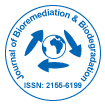Research Article
The Suitability of Using Vermicomposting for the Stabilization of Septic Tank Waste
Andrew van Schaik1, Jennifer Prosser1, Doug Graham2, Jianming Xue2, Lynn Booth3 and Jacqui Horswell1*
1Institute of Environmental Science and Research Limited (ESR), PO Box 50-348, Porirua 5240, New Zealand
2Scion, Te Papa Tipu Innovation Park, Private Bag 3020, Rotorua 3046, New Zealand
3Landcare Research, PO Box 40, Lincoln 7640, New Zealand
- *Corresponding Author:
- Jacqui Horswell
Institute of Environmental Science and Research Limited (ESR)
PO Box 50-348, Porirua 5240
New Zealand
Tel: +6449140684
E-mail: Jacqui.horswell@esr.cri.nz
Received date: August 15, 2016; Accepted date: August 23, 2016; Published date: August 24, 2016
Citation: Schaik AV, Prosser J, Graham D, Xue J, Booth L, et al. (2016) The Suitability of Using Vermicomposting for the Stabilization of Septic Tank Waste. J Bioremediat Biodegrad 7: 368. doi: 10.4172/2155-6199.1000368
Copyright: © 2016 Schaik AV, et al. This is an open-a ccess article distributed under the terms of the Creative Commons Attribution License, which permits unrestricted use, distribution, and reproduction in any medium, provided the original author and source are credited.
Abstract
An investigation into the viability of vermicomposting septic tank waste was carried out. Progression of the composting process was monitored by analysing a range of chemical and biological parameters (dehydrogenase enzyme activity, Escherichia coli (E. coli), Olsen P, nitrate and ammonium). At the end of the composting period additional parameters were measured such as total C and N, organic matter, pH, soluble P and N, Salmonella spp., Campylobacter spp. and Helminth ova. Dehydrogenase activity and nitrate and ammonia ratios were shown to be useful indicators to determine the maturation of compost. However, reduction in E. coli did not relate well to removal of pathogens such as Campylobacter spp. and Helminth ova. Pasteurising temperatures cannot be achieved during vermiculture as worms are sensitive to thermophile temperatures, thus for wastes containing high levels of pathogens (such as raw sewage or septic tank waste), further treatment may be required to produce a pathogen free compost.
